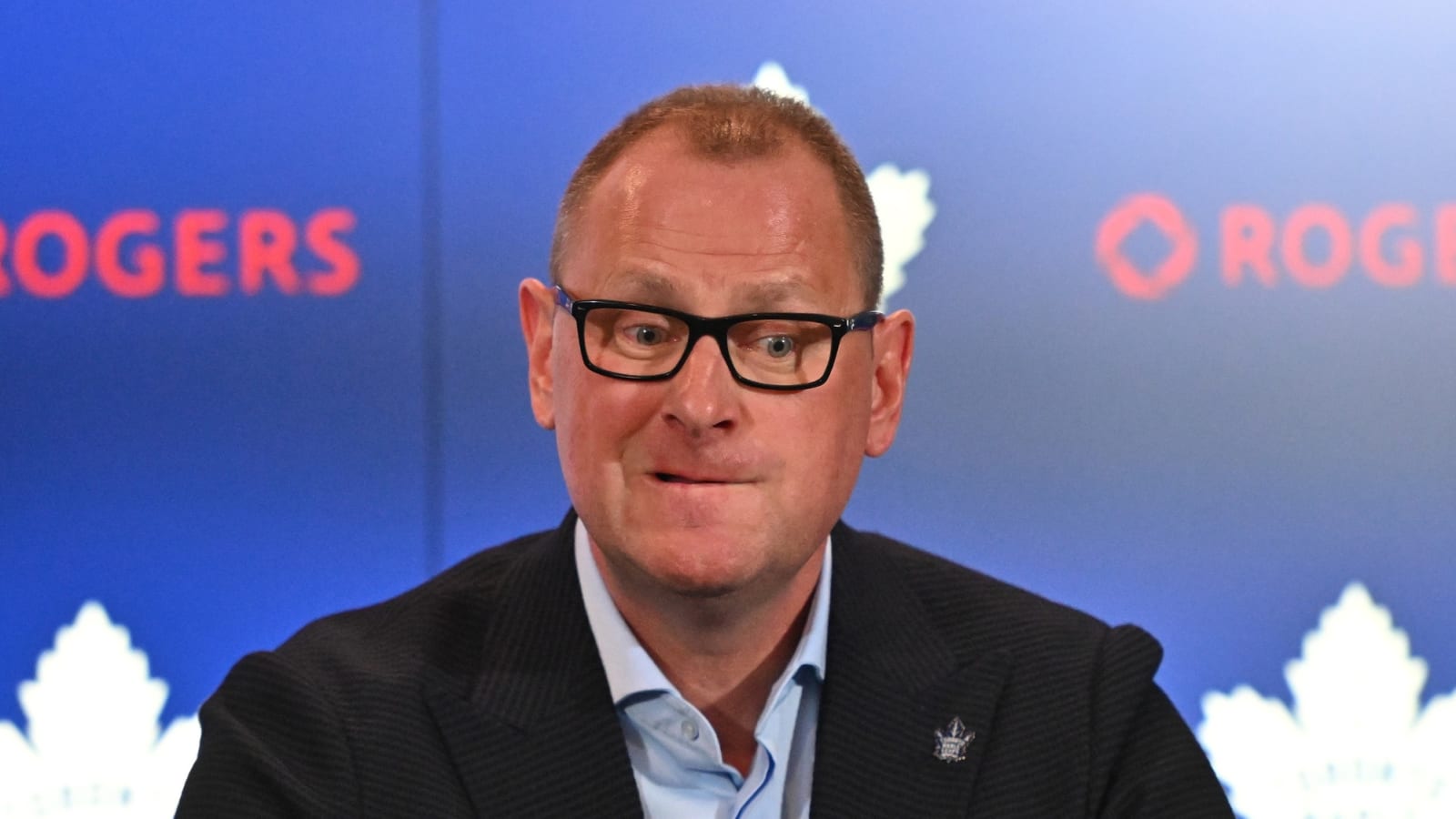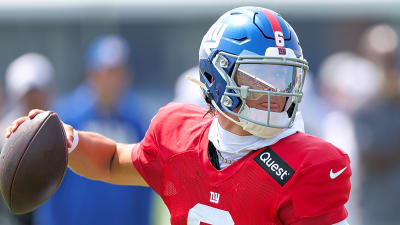
As I sit here on rainy August morning staring at the Toronto Maple Leafs cap situation on PuckPedia, I can’t help but think about how the term “cap crunch” is about to be removed from the hockey lexicon. For the past twenty years there has been a love/hate relationship with the salary cap where it has unquestionably held back rich teams like the Maple Leafs from wildly adding any player they can dream of to their roster by throwing around telecommunications money, but at the same time, the salary cap has become a fun puzzle to solve and has placed additional importance on proper drafting, scouting, development, and put an emphasis on analytics.
This summer the salary cap received its first major spike going from going from $88,000,000 to $95,500,000. The $7.5M jump was the biggest in the history of the salary cap and will be followed with jumps to $104M next season, and $113.5M the following year. This is a far cry from the $79,500,000 to $83,500,000 adjustment that took from 2018 to 2023 to occur and truly damned the Leafs in the “Core Four” era.
Now money is abundant and with eight teams still sitting on over $10M in cap space as I write this, it is getting harder for teams to spend. There are only four teams over the salary cap limit and of them, three have viable LTIR cases that will ensure their compliance throughout the regular season, and the Panthers are the only one that will need to figure something out over the course of the year. That’s a pretty big change.
The unrestricted free agent market has been exhausted and of the remaining restricted free agents most can be comfortably absorbed into their team’s salary cap situation without significant impact to the roster.
It begs the question:
Is salary cap discourse dead?
On the surface it would appear it doesn’t. Teams can re-sign their players. Of those players who did reach free agency most contracts stayed grounded in what players would historically get compensated at for their roles (with Christian Dvorak and Mikael Granlund being a couple of exceptions) and players making their decisions on where they see themselves as a fit, where they’d be happy playing, or prioritizing competitive teams rather than teams offering up excessive paydays.
Assuming this trend continues it seems likely that the trend of re-signing veterans to manageable pay increases will be the trend with a few electing for a change of scenery will result in less significance being put on July 1st as a roster construction day. It also seems likely that rookies and gambling on cheap free agents in depth roles will be less common and retaining a broader part of the roster year to year will make the most sense. There is definitely appealing aspects to job security and less movement for the NHLPA membership.
While this will potentially make it seem that cap management will be easier, it is primarily easier from a managing the ceiling perspective, the floor may begin presenting challenges around the league. And while the salary cap may not matter a whole lot this season and maybe next, the long term outlook for the salary cap mattering isn’t as clear.
As the cap floor goes up teams will need to start spending more on marginal talent to reach that lower threshold. Dvorak and Granlund might already be prime examples of that. Granlund as a $7M player only makes sense when you consider the Ducks need to spend some money. The Sharks have gone a similar route with paying John Klingberg $4,000,000 this season and $3,000,000 for Jeff Skinner. The Blackhawks traded for Andre Burakovsky’s $5.5M AAV deal to comply with the cap. As these contracts become the new normal for teams reaching the cap floor there is some potential that they will become the benchmark for compensation across the league and the window of time where the salary cap doesn’t matter will close.
It is also hard to ignore two other big picture impacts on the salary cap situation: Labour peace and the NHL’s desire for expansion fees.
Labour peace directly feeds into the expansion aspect, so we’ll start there. If the NHL wants to take advantage of uninterrupted hockey and boost typically seen from the Winter Olympics to open up to expansion, that likely means at least two new teams entering the league in the next few years with obligations to spend around $100M+ on their rosters. Given that finding talent in the NHL is already a struggle for the existing teams, expansion might open the doors to bidding wars for players and salaries could quickly spike as a result. At the same time, expansion might also serve as a correction pre-expansion salary escalation but that two seems like it would potentially be shortlived.
The stability of labour peace in general seems like a potential catalyst to spend more and while the 2025 free agency period was ushered in knowing that collective agreement was in place, front offices and agents didn’t have a lengthy period to react to it and didn’t have the foreknowledge of how free agency would play out with a significant spike in the salary cap. It seems premature to think that next season will look the same.
The canary in the coal mine for knowing how much the salary cap will matter going forward will be the contract extensions seen in-season. Will players begin asking for more now that there is a lot more than previous seasons? (Over 24% more space in 2026-27 than in 2023-24.) While contracts have grown at the elite player level, will it become the norm for third line players to make more than $5M (next season on a 23 player roster the average salary for a team at the cap would be $4.5M). For a team like the Leafs that means only Matthews, Nylander, Knies, and Rielly would be deals exceeding the average.
By next season it seems impossible for the league to completely catch up to the new salary cap reality and it seems more than likely it will need to be at least July 1st, 2027, if not 2028 before we hear the phrase “cap crunch” again.
If the salary cap is truly something that doesn’t matter going forward it also raises the question of whether or not the NHL will even need it in their next CBA and in 2030, do we see it becoming an issue for the owners about abolishing it rather than something the players want to see happen?
In the short term there seems like opportunities to mitigate some risks of if the salary cap starts to matter again.
The first is that it is likely always in the team’s best interest to sign players earlier rather than later. Taking a chance on renewing Matias Maccelli and Anthony Stolarz now might come with what feels like a bit of an overpayment but there is already a trend towards there being a penalty for waiting in the NHL.
At the same time, not being afraid of term seems reasonable too. Buying out contracts with dead cap space doesn’t seem like it will matter as much and can be worked around. Locking in for term on anyone could result in them being a bargain in a couple of years even if their play declines.
Trading for term and trading for players that might be viewed as being on less than great contracts today might look savvy tomorrow. Max Domi at $3.75M might not have been great at the time it was signed and might even be infuriating this year but in 2026-27 a near 40 point forward under $4M could either be a steal or at least a player that would comfortably fit into most team’s salary situations. It should definitely add to the appeal of looking at someone like Rickard Rakell on the Penguins as an option given the combination of reasonable term and production and by next year his salary aligns with what is acceptable for a third liner.
For teams that can afford to spend more there is going to be a benefit of frontloading contracts and dealing them as performance declines but carry a cap hit below the actual remaining salary owed. At the same time looking for those players that have become too expensive to have on teams that aren’t bringing in playoff ticket revenue.
The lesson here is that salary cap is about to matter a lot less overall but for a team that loves to spend like the Leafs, and needs to benefit from spending smartly, the salary cap is still going to play an important role. While it seems that getting up in arms over contracts might be on the way out, the teams that want to spend every dollar available to them need to put some smart strategies in place now.
More must-reads:
- Best fits for fringe NHL playoff teams to complete their roster
- Five likely NHL bounce-back candidates for 2025-26
- The 'NFL Defensive Players of the Year ' quiz
Breaking News
Trending News
Customize Your Newsletter
 +
+
Get the latest news and rumors, customized to your favorite sports and teams. Emailed daily. Always free!








